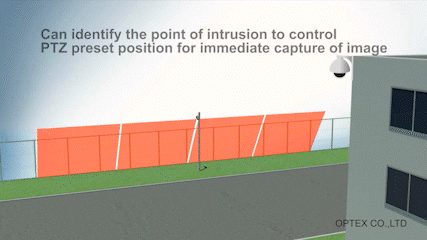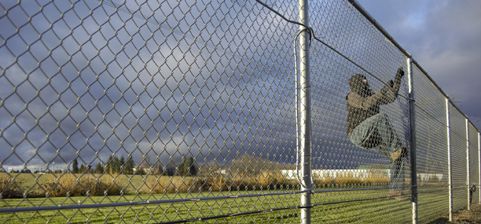Optimizing Perimeter Security in Data Centers
The Role of Perimeter Security in Data Centers
Currently, data centers serve not merely as data storage facilities, but as critical infrastructure supporting industries such as finance, healthcare, government, and manufacturing. As such, physical security measures are just as vital as cybersecurity.
Perimeter security acts as the first line of defense against unauthorized access. By integrating fences, surveillance cameras, and appropriate sensors, facilities can enhance both the accuracy and responsiveness of intrusion detection at the boundary. Especially in environments handling sensitive data, early detection of suspicious activity is essential to prevent potential damage.
Moreover, perimeter security is not only a deterrent—it directly influences the facility’s reliability and reputation. A high level of physical security is essential for fulfilling service provider responsibilities and meeting audit and contractual requirements.
In this way, perimeter security is a strategic initiative that contributes not only to protection, but also to building trust.

Structure and Operation of the Perimeter Defense Layer
Integration of Fences, Surveillance Cameras, Security Personnel, and Sensors
Perimeter security in data centers is built on a layered approach that combines multiple protective measures. Physical barriers such as fences, visual monitoring through surveillance cameras, routine patrols by security personnel, and real-time intrusion detection via sensors all work in concert to enhance the overall level of vigilance.
Sensors play a particularly critical role by detecting unauthorized approaches or intrusions near or beyond the fence line. When integrated with camera systems and alarm protocols, they enable rapid response by security teams. By operating these elements as a unified system, the flow from detection to action becomes seamless, significantly improving the reliability and effectiveness of the security infrastructure.

Technical Requirements for Perimeter Security
Effective perimeter security in data centers demands both high detection accuracy and operational stability. Technologies that minimize false alarms—caused by rain, fog, small animals, birds, or direct sunlight—are essential to maintaining a reliable security posture. Sensors must perform consistently under diverse environmental conditions to ensure uninterrupted protection.
Optimal Selection of Perimeter Security Sensors
Effective perimeter security requires selecting sensors that align with the site’s layout and specific surveillance needs.
Fiber optic sensors, installed along fences or underground, enable real-time monitoring over large areas and detect anomalies such as vibrations or cutting attempts with high sensitivity.
LiDAR sensors are ideal for focused surveillance of gates, entrances, or open areas without fencing, accurately detecting the passage of people and vehicles.
Photobeam sensors are suited for establishing linear detection zones, helping to clearly define boundaries and secure perimeters.
By strategically combining these technologies, it is possible to build a comprehensive security system with minimal blind spots.

Zoning and Alarm Integration Design for Surveillance Areas
In large-scale data centers, dividing the perimeter into multiple surveillance zones allows for more efficient and flexible operations. By configuring sensor sensitivity and notification protocols for each zone, facilities can tailor their security responses to the specific risk level of each area. Zoning helps clearly distinguish between high-priority and standard monitoring zones, contributing to the reduction of false alarms.
Furthermore, designing a seamless workflow—from sensor detection to alarm activation, video verification, and notification to security personnel—enables a highly responsive security system. This integrated approach shortens reaction times during incidents and plays a critical role in preventing damage before it occurs.
Maintaining Perimeter Security During Disruptions and Recovery Planning
Maintaining perimeter security during disasters or system failures is essential to ensuring the safety and reliability of data center operations. In business continuity planning and disaster recovery strategies, it is critical to prepare for power outages and communication disruptions by implementing redundant power sources and diversified communication channels for security systems. These measures help maintain surveillance capabilities even under adverse conditions.
To prevent facilities from becoming vulnerable during recovery operations, physical security must be integrated into operational planning from the outset. Establishing such frameworks during normal operations is key to sustaining protection and minimizing risk during emergencies.
Enhancing Perimeter Security with OPTEX Solutions
OPTEX delivers advanced sensor technologies designed for outdoor environments, with extensive deployments across critical facilities worldwide. Notably, its sensors are engineered to minimize false alarms and maintain stable detection performance, contributing to both operational efficiency and enhanced reliability in security operations.
A key strength lies in their robust resistance to environmental factors that commonly trigger false alerts—such as rain, swaying vegetation, direct sunlight, and the movement of animals or birds. This resilience ensures consistent performance even under challenging conditions. Furthermore, OPTEX solutions support seamless integration with surveillance cameras and video management systems, enabling synchronized detection, recording, and alerting. This enhances both responsiveness and evidentiary value. With flexible system design capabilities, OPTEX sensors can be tailored to meet the specific perimeter security needs of each facility, supporting the advancement of comprehensive and dependable protection strategies.
Contact OPTEX
Please feel free to contact us for further information.
We are always eager to support you and propose a solution that suits your needs.








